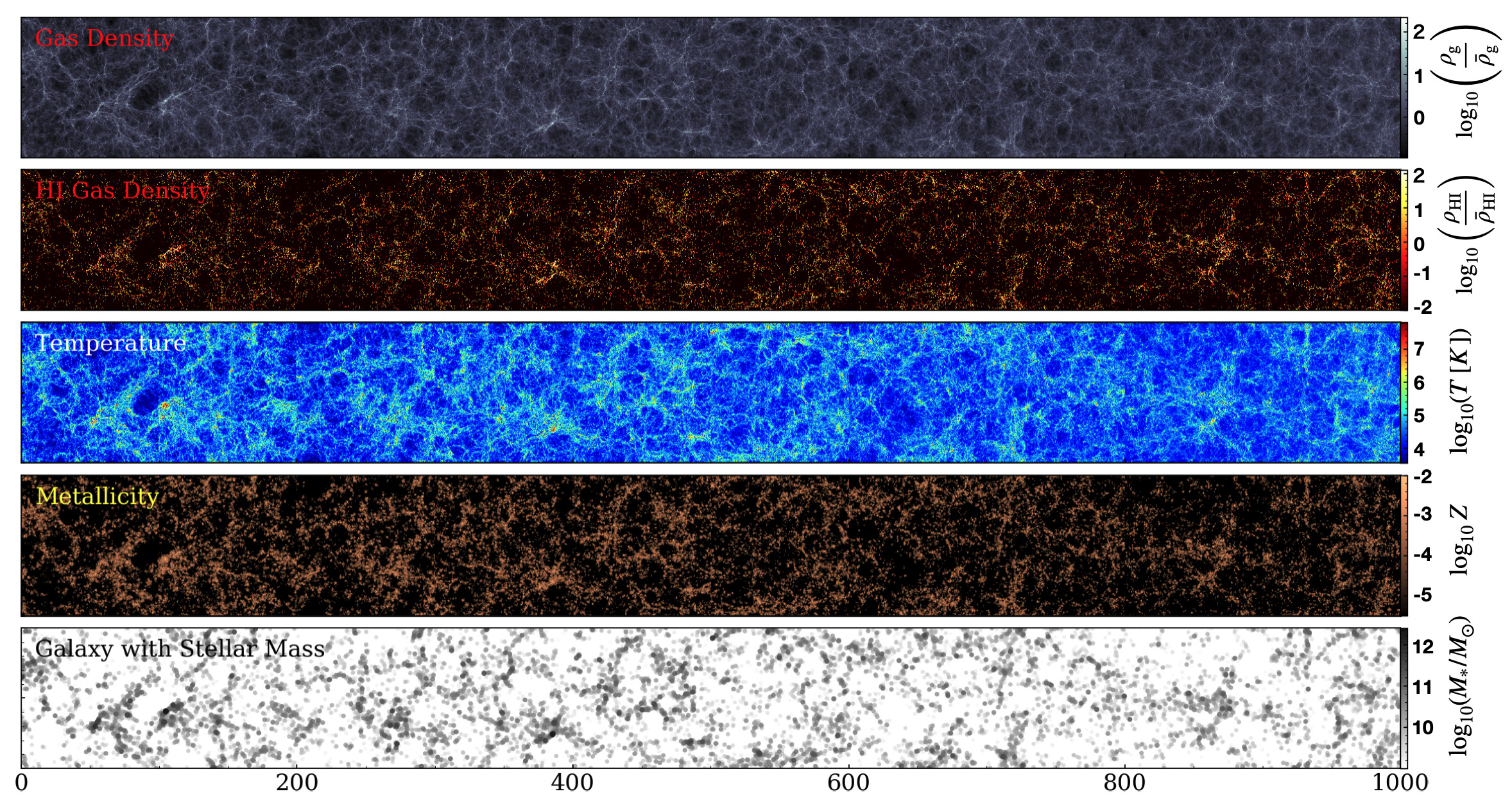Tsukuba Uchu Forum
127th Uchu Forum

Probing the impact of feedback by cosmological hydrodynamic simulations
Kentaro Nagamine
Osaka University
Abstract
Observations of the cosmic background radiation have established the $\Lambda$ cold dark matter (CDM) model as the standard cosmological model, and on large scales the $\Lambda$CDM model has been very successful, providing the backbone of the cosmic large-scale structure. However, on small scales below 1 Mpc, there are still many gaps in our understanding of galaxy formation. In particular, feedback from supernova explosions and SMBHs plays an important role in self-regulating the growth of galaxies and SMBHs, but the detailed mechanisms are still poorly understood.
Cosmological hydrodynamic simulations have become an essential tool for cosmological studies of galaxy and supermassive black hole (SMBH) formation. Some recent high-resolution zoom-in simulations have achieved resolutions of less than 10 parsecs. However, it is still difficult to simulate a large number of galaxies down to redshift $z=0$ at such high resolution, and physical subgrid models are still needed for star formation and feedback.In this talk, I will describe recent efforts to develop feedback models based on high-resolution simulations of superbubbles (Oku et al. 2022). I will also show the possibility of distinguishing feedback models by comparing cosmological hydrodynamic simulations with observations of galaxies, IGM tomography, and cross-correlation functions (Momose et al. 2021abc; Nagamine et al. 2021). If time permits, I will also present the results of the implementation of dust formation and destruction models in galaxy simulations.



 和 英
和 英